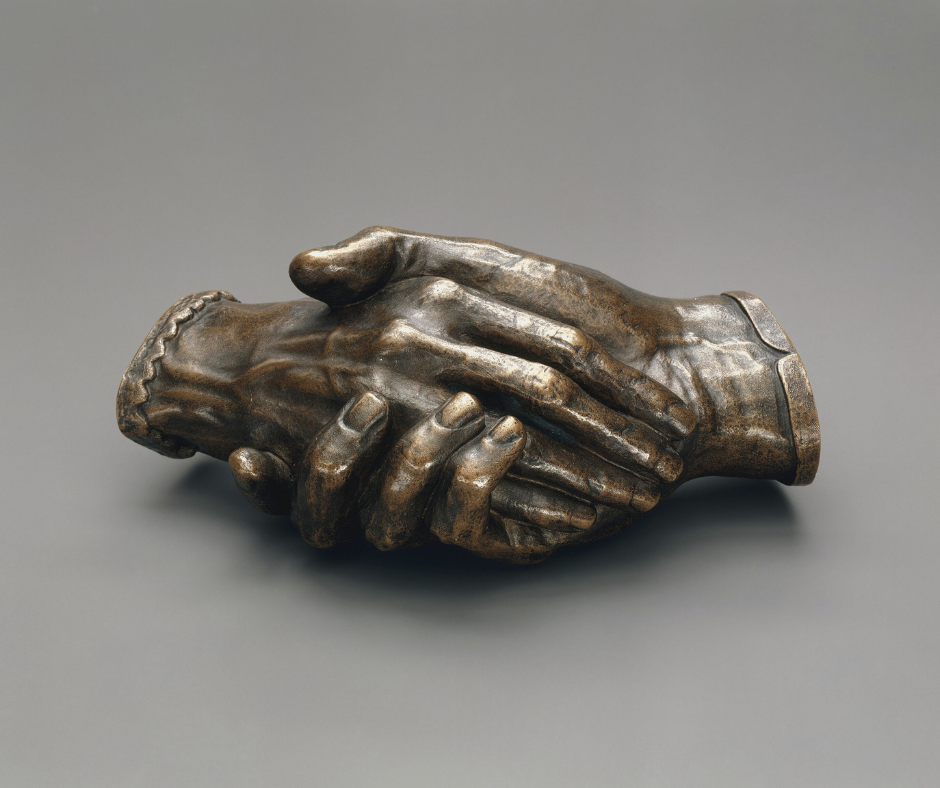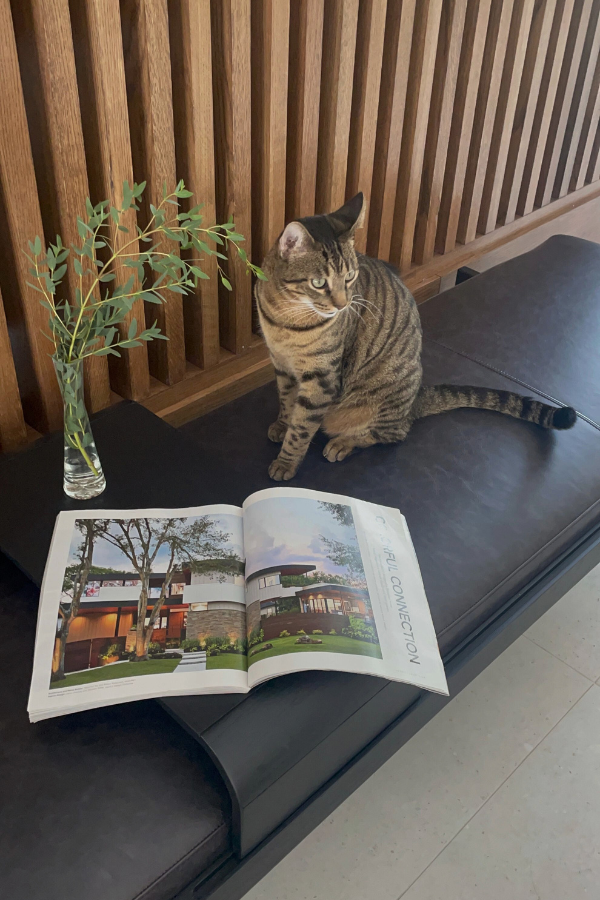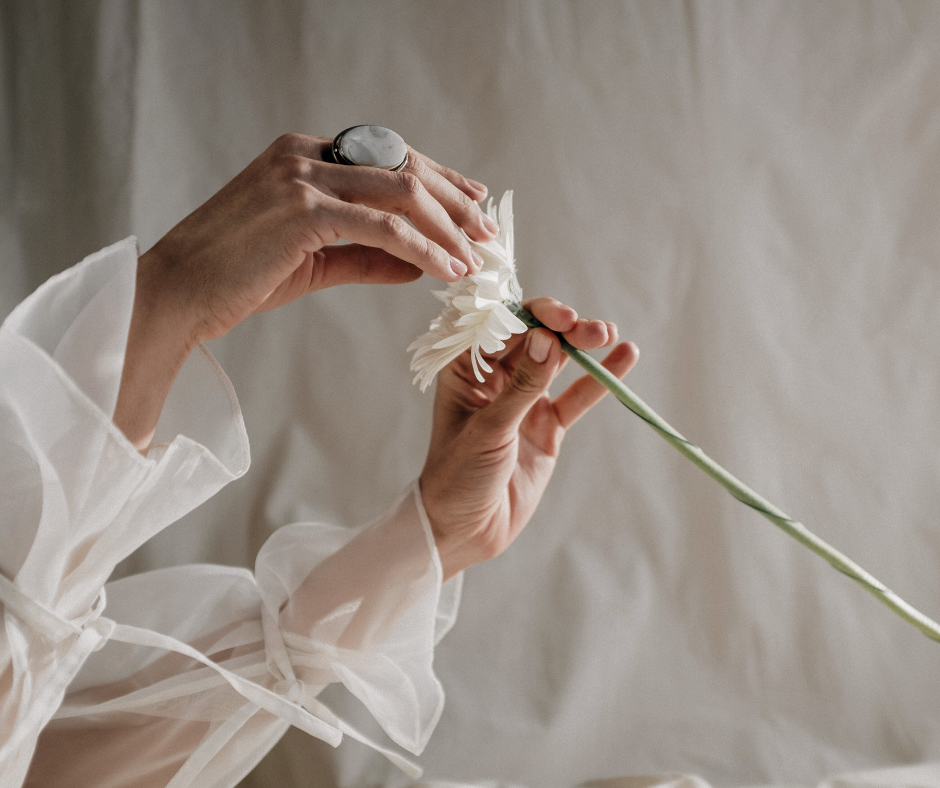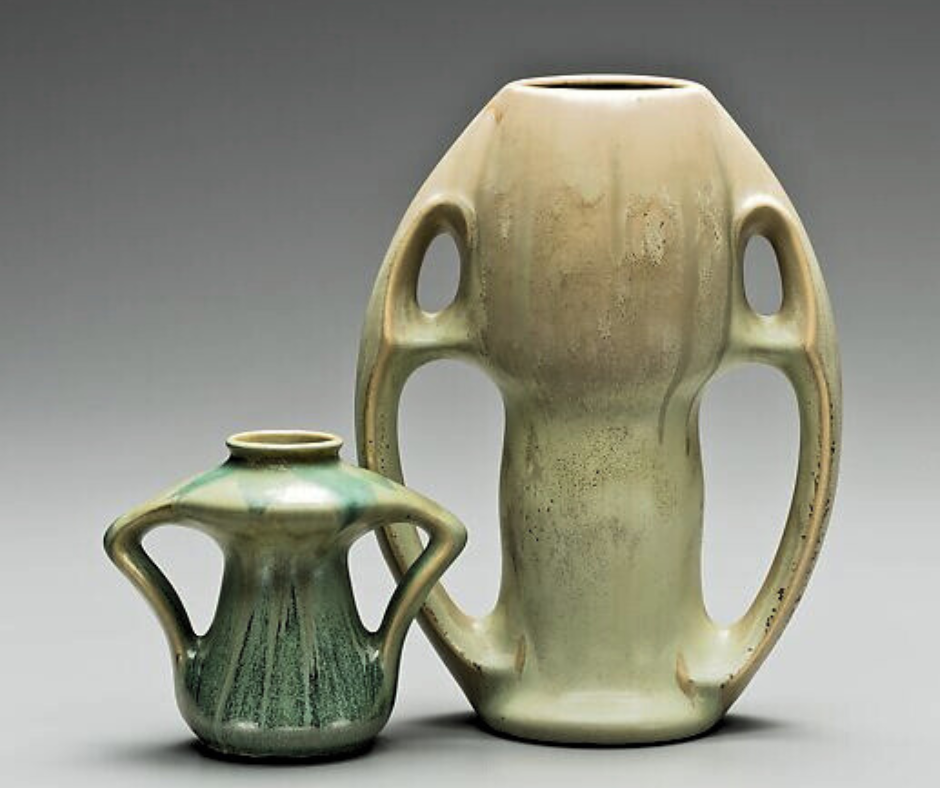
Blast from the Gilded Past: Should 1980s Interior Design Make a Comeback?
Summary
Reflection Questions
Journal Prompt
The 1980s were defined by bold self-expression, economic prosperity, and a culture of excess. Interior design trends during this decade were no exception: bold, opulent, and eclectic. Ultra clean lines, bright colors, tropical prints, emerging technology, mahogany furniture, and lots of gold filled both residential and commercial spaces. Interior designers of the day jumped at a chance to create exciting, unique spaces that were intriguing and a bit outrageous. Considering today’s aesthetics, consumer culture, economic landscape, and broader views on sustainability, should 1980s interior design make a comeback or does it belong in the past? Does this retro decade offer 21st century Americans anything at all? Let’s take a little jaunt down memory lane to arrive at our answer.
Interior Design Styles of the 1980s
The 1980s was a decade of bold self-expression, economic prosperity, and a culture of excess—all of which were reflected in American interior design. If you had to define the era in two words, those would be “style” and “status.”
Interiors of the 1980s were marked by a vibrant mix of colors, patterns, shapes, and textures—often combined in eclectic and flamboyant ways. Think Miami Vice and Palm Springs: neon accents and other bold colors, graphic patterns, fluted surfaces, geometric shapes, animal prints, and contrasting patterns like stripes and polka dots. Materials like chrome, glass, and lacquered finishes were extremely popular. Furniture was oversized and plush. Throw pillows, curtains, and duvets were fluffy, ruffly, and boldly patterned.
Put simply, the 1980s embraced a “more is more” philosophy. Design decisions were personal and completely unfettered. Its maximalist designs celebrated individuality and a zest for life.
Bold Colors, Luxe Materials, and High-Tech Design
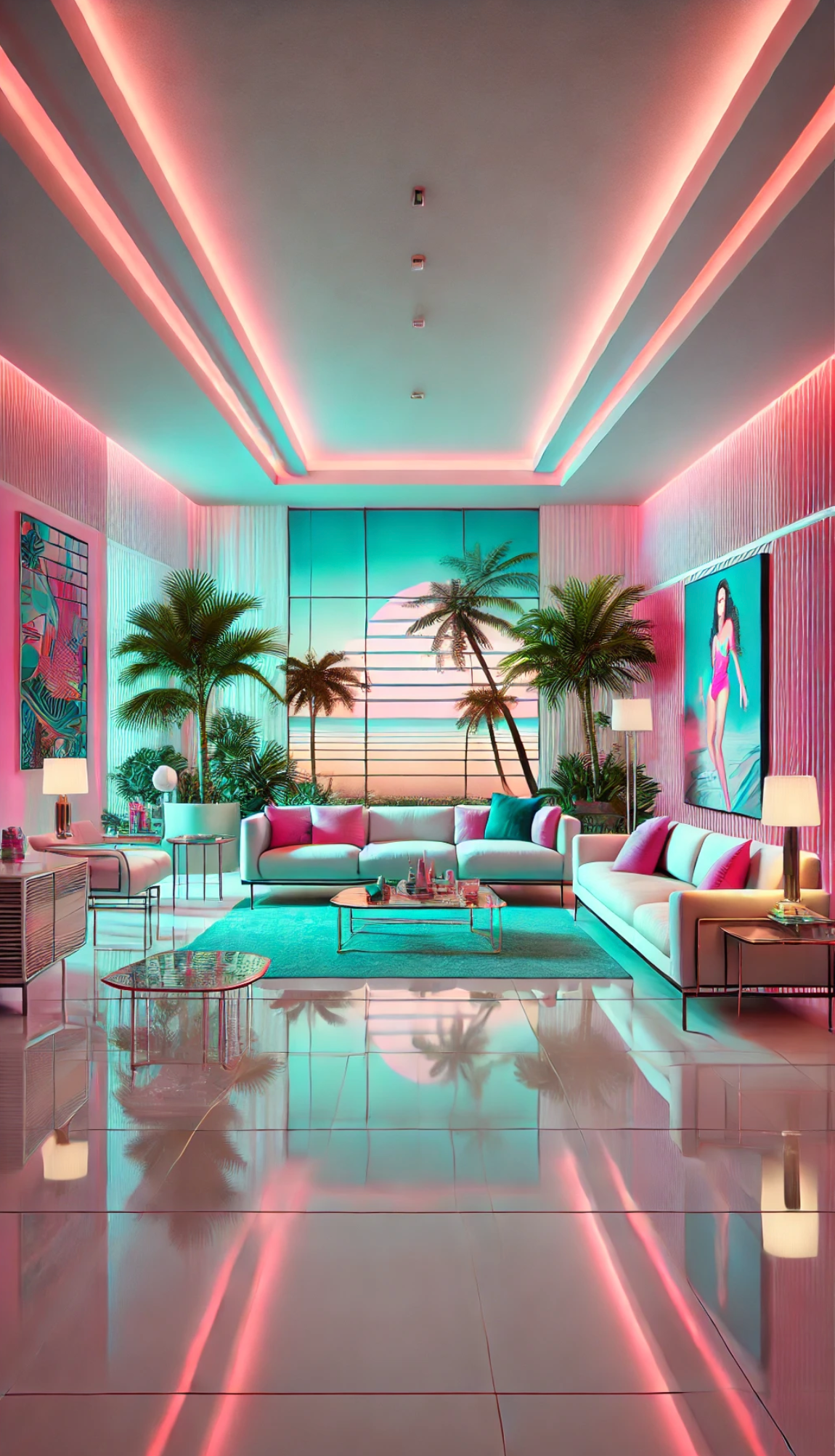
According to style experts, the 1980s was an incredibly eclectic era. It played host to the Memphis Design Movement, Art Deco Revival, and the integration of high-tech, space age elements.
Characterized by its unapologetic use of vibrant colors, geometric forms, and stark asymmetries, Memphis Design embraced a playful and almost whimsical aesthetic. Furniture pieces, textiles, and accessories in this style featured unexpected combinations of materials and patterns—creating lively, dynamic interiors that echoed the era’s spirited pop culture.
Art Deco Revival tapped into the decadence of the 1920s and 1930s—bringing back the era’s distinct flair for luxury and sophistication. This style emphasized geometric symmetry, sleek lines, and opulent materials like brass, gold, and chrome, which were often complemented by high-gloss finishes and mirrored surfaces. Velvet upholstery, lacquered furniture, and lavish decorative elements added to the extravagance.
Cultural and Economic Influences in 1980s American Interiors
The economic boom of the 1980s fueled consumerism and encouraged Americans to indulge in extravagant decor that reflected their newfound wealth. This era saw a surge in the popularity of designer brands and high-end furniture, as people sought to showcase their status through their homes.
Cable television and home video recorders brought interior design inspiration directly into living rooms through shows like “Lifestyles of the Rich and Famous” and “Dynasty.” Pop culture icons like Madonna and Michael Jackson influenced trends with their bold fashion choices—inspiring vibrant color palettes and playful patterns.
Iconic Examples of 1980s Interior Design
Trump Tower (New York City)
Completed in 1983, Trump Tower is the embodiment of overstated luxury and excessive grandeur we associate with 1980s architecture. At the time, this skyscraper’s lobby boasted an impressive atrium, with a 60-foot waterfall, surfaces adorned with polished brass, and extensive pink marble detailing. These elements combined to epitomize the decade’s penchant for opulence and excess. As a towering symbol of wealth and power, Trump Tower reflected the extravagant lifestyles and consumerist cultural ethos of the 1980s.
Versace Mansion (Miami)
The Versace Mansion—also known as Casa Casuarina—echoed the extravagant design trends of the 1980s, even though fashion designer Gianni Versace purchased and put a new spin on it during the early 1990s. The mansion’s architecture and interior design heavily drew on the luxuriousness that defined the previous decade—featuring intricate mosaics, gold trimmings, circular forms, and opulent fabrics.
These lavish elements showcased Versace’s personal style and the general 1980s flair for dramatic, over-the-top aesthetics. The mansion remained a striking example of how 1980s luxury influenced fashion and design well into the 1990s.
The Bonaventure Hotel (Los Angeles)
Though completed in 1976, The Bonaventure Hotel became an icon during the 1980s. It embodied the futuristic and high-tech design trends that were prevalent during the decade. Known for its mirrored glass exterior and distinctive cylindrical architecture, the hotel featured a revolving rooftop lounge that offered panoramic views of Los Angeles.
The interior and architectural design of The Bonaventure Hotel captured the era’s innovative spirit and luxury. Its frequent appearances in films and TV shows throughout the decade further cemented its status as a cultural and design landmark in the heart of Los Angeles.
Should 1980s Interior Design Make a Comeback in 2024?
Alignment with Today’s Aesthetic
80s interiors might not be the time capsule we think they are. In the 1980s, interior design was characterized by an unreserved use of bold colors and geometric patterns, accompanied by a playful approach to style. Today, we are certainly seeing a resurgence in the use of bold colors and patterns, particularly in accent pieces, wallpapers, and textiles.
However, the modern application of these vibrant elements tends to be more refined and balanced—intended to inject personality and visual interest without overpowering the overall aesthetic of the space. Modern maximalism is typically more curated—focusing on the thoughtful layering of textures and patterns that enhance the space without overwhelming it.
The 1980s also marked the introduction of home electronics and entertainment centers. At the center of family life, this equipment was a focal point in many living spaces. Today, homeowners prefer more seamless and sleek incorporation of smart home technology. Modern interiors prioritize the unobtrusive blending of technology, where devices are integrated so subtly that they enhance living spaces without dominating them.
Sustainability and Consumerism
The 1980s were marked by a pervasive culture of consumerism and a tendency toward disposable products. This era emphasized acquiring and showcasing material goods—often leading to excessive consumption and waste. Interiors and lifestyles were defined by an abundance of products that mirrored the economic boom of the time, but this often came at the expense of environmental considerations. The focus was more on the novelty and aesthetic appeal of items rather than their longevity or impact on the environment.
In stark contrast, today’s interior design and consumer habits are heavily oriented towards sustainability. There is a growing focus on using eco-friendly materials and adopting ethical consumption practices. This shift reflects a broader societal recognition of environmental issues and a commitment to reducing ecological footprints. Additionally, there is a resurgence in the popularity of vintage and upcycled furniture from the 1980s—driven by both environmental consciousness and a nostalgic appreciation for the designs of the era. These practices not only honor the aesthetic of the past but also promote a more sustainable approach to living.
Health and Wellness
During the 1980s, interiors prioritized aesthetics and statement pieces over health and wellness. The focus was predominantly on visual impact and style, with less consideration given to the physical and mental well-being of the occupants. Design choices were frequently driven by trends and the desire to exhibit wealth and status—sometimes at the expense of comfort and environmental health.
Fuel your creative fire & be a part of a supportive community that values how you love to live.
subscribe to our newsletter
*please check your Spam folder for the latest DesignDash Magazine issue immediately after subscription

Contrastingly, modern interior design places a strong emphasis on creating spaces that promote both mental and physical well-being. This contemporary approach includes the integration of biophilic design elements, which bring natural environments into indoor spaces, and ergonomic furniture that enhances comfort and supports bodily health. Today’s design philosophies recognize that our surroundings significantly impact our health. Our interiors are not only beautiful but also nurturing and restorative.
Global Influences
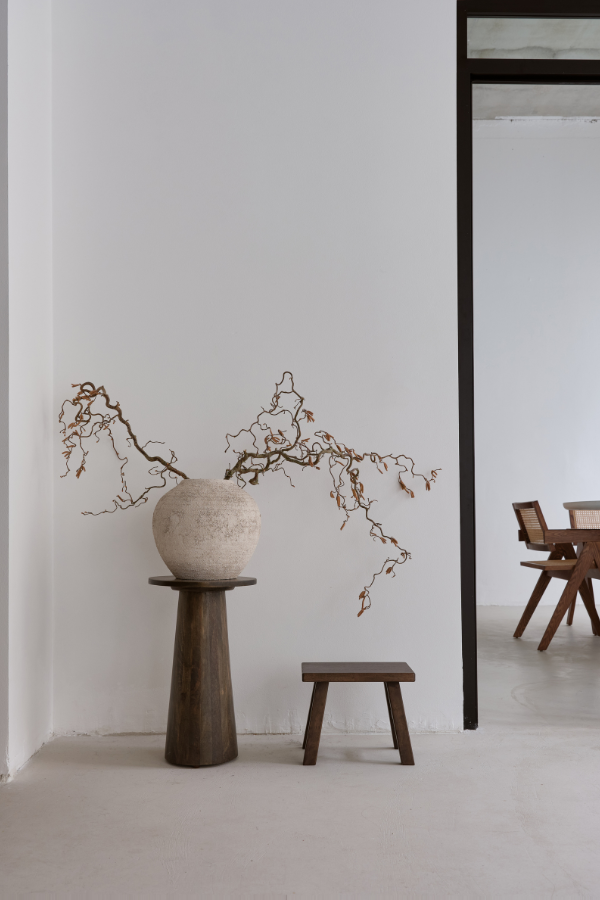
In the 1980s, interior design styles were often more localized. Global influences were less pronounced, as the flow of information and access to international products was more restricted compared to today. The result was a range of distinctive styles that were deeply rooted in local traditions and aesthetics.
Today, the aesthetic of interior design is profoundly influenced by a blend of global cultures, which reflects our more connected world. This diversity enriches contemporary spaces with varied cultural inspirations. Style experts share their favorite pieces, designers, and trends from Europe, Asia, Africa, and the Americas with all of us—whether on HGTV, in a newsletter, or through their Instagram account. Modern designers draw on a wide array of influences—from Scandinavian minimalism to Japanese Zen and Mediterranean vibrancy.
Final Thoughts on the Return of 1980s Design
While the bold and exuberant 1980s design aesthetic might seem at odds with the more minimalist and sustainable trends of today, a return to certain ’80s elements could make sense in a modern context. Both eras share a focus on self-expression and individuality, albeit with different tools and priorities. The 1980s emphasis on vibrant colors, eclectic patterns, and statement pieces can be incorporated into contemporary interiors in a more curated and intentional way.
By blending vintage finds with modern furniture and focusing on quality, sustainably-sourced materials, we can strike a balance between that nostalgic charm and our contemporary sensibilities. Whether ’80s design is seen as out of touch and elitist or personal and aspirational ultimately depends on individual perspective and how these elements are integrated into modern life.





